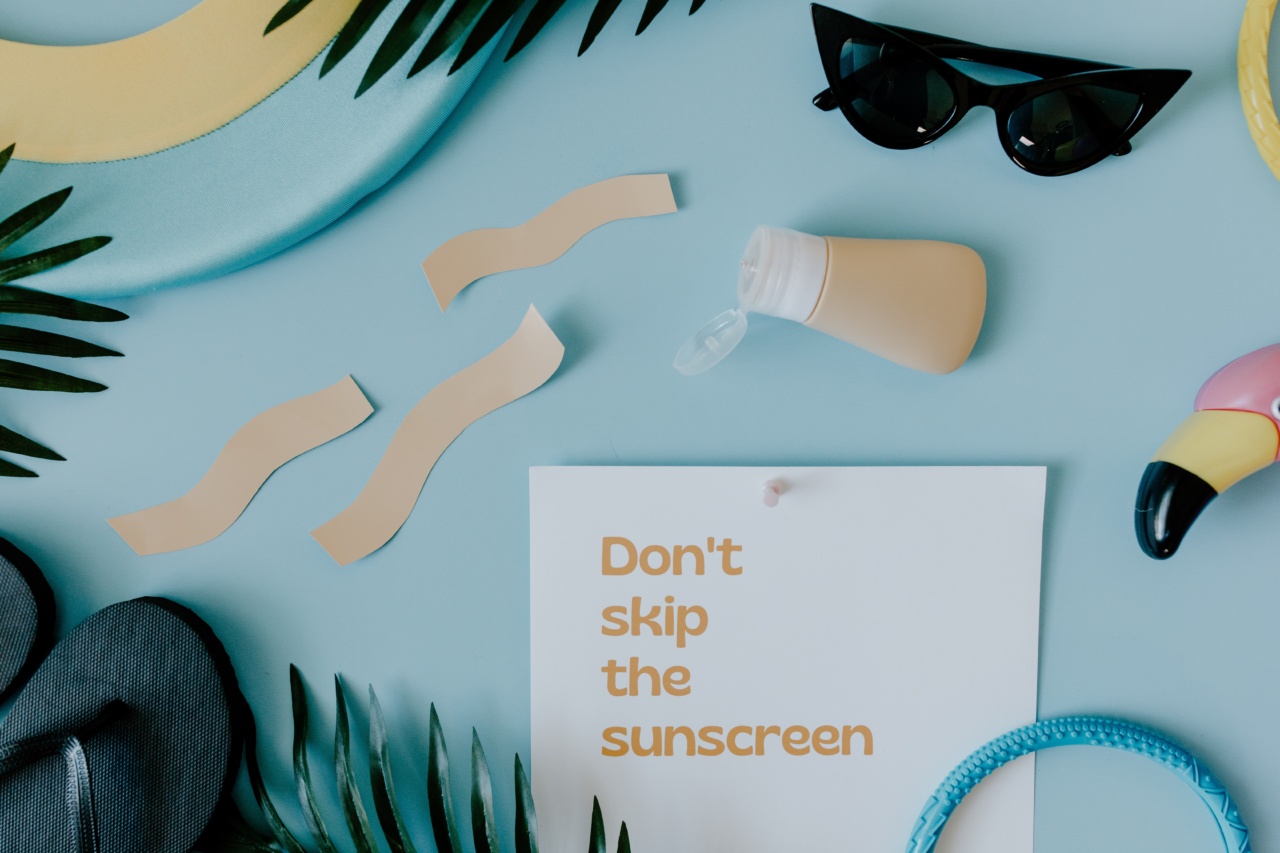When it comes to protecting our skin from the sun’s harmful rays, sunscreen is undoubtedly one of the most important tools in our arsenal.
Whether we’re heading to the beach, going for a hike, or simply running errands, wearing sunscreen should be an essential part of our daily routine.
Understanding Sunscreen Ingredients
However, not all sunscreens are created equal. With so many options available on the market, it can be overwhelming to decipher which sunscreen is the best choice for our skin.
To make an informed decision, it’s crucial to understand the various ingredients found in sunscreens.
Chemical Sunscreens
Chemical sunscreens are the most common type of sunscreen. These sunscreens work by absorbing UV radiation and converting it into heat, which is then released from the skin.
Some of the most common chemical sunscreen ingredients include:.
- Oxybenzone
- Avobenzone
- Octinoxate
- Octisalate
- Homosalate
While chemical sunscreens are effective at protecting against the sun’s rays, they may not be suitable for everyone. Some individuals may experience skin irritation or allergic reactions to certain chemical ingredients.
Physical Sunscreens
Physical sunscreens, also known as mineral sunscreens, work by creating a physical barrier on the skin’s surface. These sunscreens contain active ingredients like zinc oxide or titanium dioxide, which deflect and scatter UV radiation.
Physical sunscreens have gained popularity in recent years due to their gentle nature and broader spectrum of protection. They are also less likely to cause skin irritation, making them a preferred option for those with sensitive skin.
Broad-Spectrum Protection
When choosing a sunscreen, it’s crucial to opt for a broad-spectrum formula. Broad-spectrum sunscreens provide protection against both UVA and UVB rays.
UVA rays penetrate deep into the skin and are primarily responsible for premature aging and wrinkles. On the other hand, UVB rays primarily affect the top layers of the skin and are the leading cause of sunburns.
By using a broad-spectrum sunscreen, we can safeguard our skin against both types of harmful radiation, reducing the risk of sunburn, premature aging, and potentially even skin cancer.
SPF and Sunscreen Application
SPF, or Sun Protection Factor, is a measure of how effectively a sunscreen protects the skin against UVB rays. The higher the SPF, the greater the level of protection.
However, it’s essential to note that SPF only measures protection against UVB rays.
When it comes to UVA protection, we should look for sunscreens labeled “broad-spectrum” or those that contain physical sunscreen ingredients like zinc oxide or titanium dioxide.
Additionally, proper application of sunscreen is crucial for its effectiveness. Experts recommend applying sunscreen generously onto exposed skin, at least 15-30 minutes before sun exposure.
Reapplication every two hours, or more frequently if swimming or sweating, is also recommended.
Sunscreen and Environmental Impact
While wearing sunscreen is essential for protecting our skin, it’s equally important to consider its potential impact on the environment.
Certain chemical sunscreen ingredients, such as oxybenzone and octinoxate, have been found to be harmful to coral reefs and marine life.
These ingredients can contribute to coral bleaching, disrupt the growth and development of coral, and ultimately harm delicate ecosystems.
Fortunately, many brands are now offering reef-friendly sunscreens that use alternative sunscreen ingredients, such as non-nano zinc oxide or titanium dioxide.
These ingredients are less likely to harm marine life and still provide effective sun protection.
Choosing the Right Sunscreen
When selecting a sunscreen, it’s crucial to consider our skin type, any sensitivities or allergies we may have, and the environmental impact of the product.
Here are some key factors to keep in mind when choosing a sunscreen:.
- Opt for a broad-spectrum sunscreen that protects against both UVA and UVB rays.
- Consider your skin type and choose a sunscreen suitable for your specific needs (e.g., sensitive skin, oily skin, etc.).
- Check for any potential allergens or irritants in the ingredients list.
- If concerned about the environment, choose a reef-friendly sunscreen.
- Ensure the sunscreen has a sufficient SPF level for your desired level of protection.
- Don’t forget to check the expiration date of the sunscreen and replace it when necessary.
Conclusion
Sunscreen is a vital tool in protecting our skin from the sun’s harmful rays.
By understanding the different sunscreen ingredients and selecting the right product for our needs, we can ensure optimal sun protection while minimizing the risk of skin damage and environmental harm.































